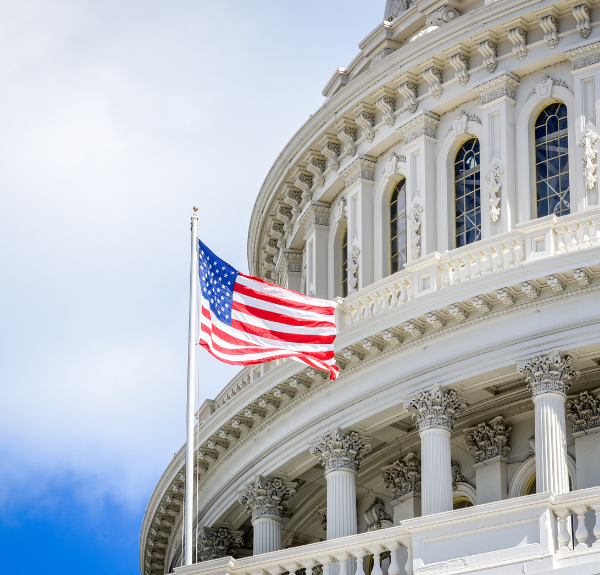Today, the Office of Management and Budget is publishing the latest quarterly Agency Priority Goal (APG) updates on Performance.gov. APGs are an agency’s near-term, implementation-focused priorities that are established every two years and report on a quarterly cadence.
As the FY 2023 APGs reach the halfway point, agencies reported not only on accomplishments made in the past quarter, but also on the goal’s overall performance over the past year.
In this release, the majority of agencies indicated they are on track to achieve their agency priority goals by September 30, 2023, which is the end of the goal period. Many agencies reached significant milestones and achievements, some of which are highlighted below.
-
HIV/AIDS. Despite disruptions to HIV clinical services due to COVID-19, the U.S. President’s Emergency Plan for AIDS Relief (PEPFAR), adapted programming to overcome these challenges. As reported by the Department of State and U.S. Agency for International Development, this whole-of-government initiative was able to continue to grow the cohort of patients on lifesaving antiretroviral treatment, reaching a total of over 20.1 million people globally in 2022.
-
Artemis. The Artemis Space Launch System (SLS), the world’s most powerful rocket, performed with great precision, meeting or exceeding all performance goals during its debut launch on November 16, 2022 from NASA’s Kennedy Space Center in Florida. Although the Artemis I launch slipped to FY 2023 Q1, it set NASA’s Orion spacecraft — the exploration vehicle that will carry the crew to space — on course for a journey beyond the Moon and back, laying the foundation for the first mission with astronauts on Artemis II and humanity’s return to the lunar surface beginning with Artemis III. Learn more about the Artemis missions.
-
Strengthen the global competitiveness of American businesses. In FY 2022, the Department of Commerce helped more than 51,000 organizations expand their global footprint and reach new markets abroad. This assistance supported nearly 450,000 American jobs, including in small businesses and underserved communities.
-
Increase disadvantaged small business growth through federal procurement. The Small Business Administration (SBA) has steadily increased the number of disadvantaged small businesses receiving federal procurement contracts — up from 9% in FY 2017 to 11% in FY 2021. In FY 2022, the SBA certified nearly 5,000 8(a) Business Development firms, 65% of 8(a) firms have received at least one 8(a) contract, and over 14,000 small businesses were assisted with 7(j) Business Development and Management Programs training.
-
Water conservations and supply enhancement. The Department of the Interior exceeded their goal to increase water conservation capacity to help achieve a more sustainable water supply and address the impacts of drought in the western United States. In FY 2022, the Bureau of Reclamation facilitated water conservation capacity of 93,449 acre-feet to help reduce the impact of drought in communities such as El Paso in Texas, the City of Norman in Oklahoma, and areas throughout the Santa Ana Watershed in California.
-
Increase adoption of General Services Administration (GSA)-sponsored identity solutions. GSA’s Login.gov, which enables users to access participating government agencies with only one username and account, continues to grow — reaching over 41 million active users and 38 partner agencies in FY 2022. This marks a significant milestone in Login.gov’s mission of being the public’s one account for accessing multiple government services online, and cost-effectively helping agencies develop a better user experience, streamline user accounts, and enhance security.
-
Improving the payment experience. As of FY 2022, the Department of the Treasury increased the electronic payment rate to over 96%, which is expected to lead to an estimated reduction of 4.8 million mailed paper checks by the end of FY 2023.
-
Address the climate crisis through zero-emission fleet vehicles. In FY 2022, GSA made major progress in converting to a greener fleet by ordering 3,567 electric vehicles, marking a more than five-fold increase from FY 2021 and a 16-fold increase over FY 2020. This accomplishment supports near-term global reductions in greenhouse gas emissions and a long-term goal of net-zero global emissions.
Learn more about these goals and many more by visiting Performance.gov. You can view the latest updates from Performance.gov by clicking “Agencies” at the top of the page and selecting a specific agency from the dropdown menu.
Additionally, you can view, sort, and download information on APGs and four-year strategic agency plans by visiting our Strategic Goal Dashboard.
Stay Informed
Follow along with Performance.gov on LinkedIn and Twitter as we highlight different agencies and their goals. We will continue to update Performance.gov quarterly with progress on agency and PMA priorities and strategies.
Subscribe to our newsletter to receive updates in your inbox.




